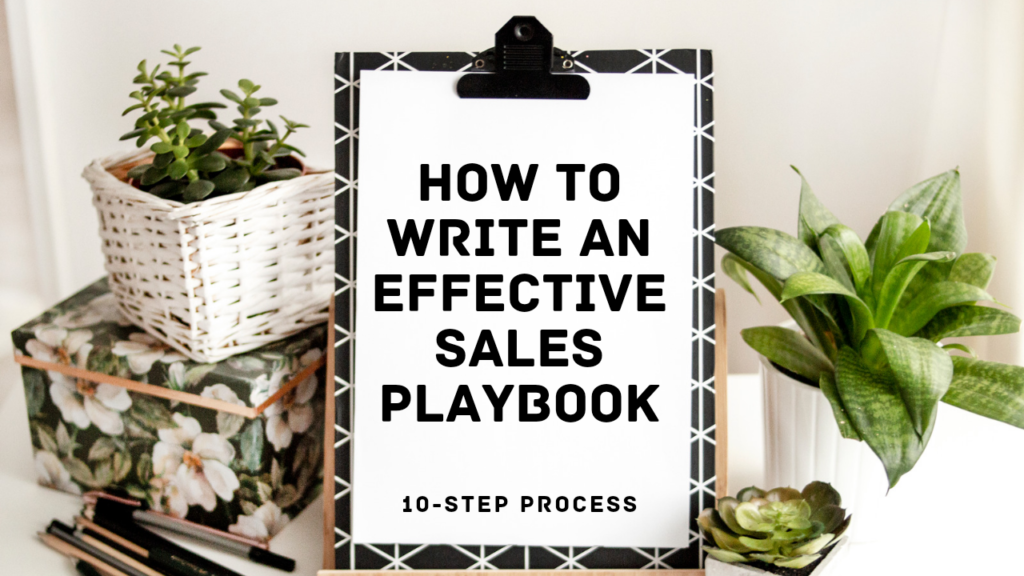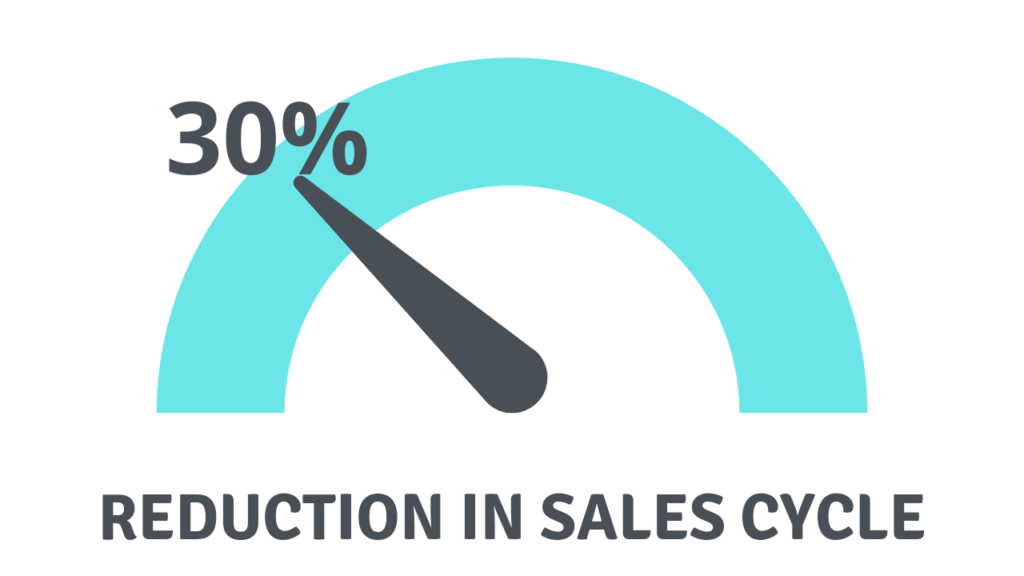
Are you struggling with your sales numbers?
Are you one of the many salespeople who feel like they are not making progress?
If so, it may be because you are NOT utilizing the right tools to get the job done!
Don’t worry! You are at the right place!
This blog will help you know some top tips that you can leverage to grow your sales numbers.
Pitching and selling is a never-ending process. It is always better to have a proactive approach to sales, rather than wait for the next sales lead.
There’s an old saying, “you can’t teach an old dog new tricks”. This simply doesn’t apply to sales. If you wonder how to improve your sales, then you should be aware that just because you are old, doesn’t mean that you are out of tricks. It’s time to get out of your comfort zone and learn some of the best practices involving sales plays and playbooks.
A Sales Play is a sales strategy designed to improve the sales numbers of a business. It enables a particular sales team (or channel partners) to successfully sell a product/service to a specific set of customers and personas during a predetermined period of time.
On the other hand, Sales Playbooks are a comprehensive set of rules, guidelines and instructions that help a sales team to execute sales successfully with the help of tools, content and resource links.
A Sales Playbook template defines each Play to the point so that the “what, why, who and how” of a specific sales objective is clear. Ultimately, each business decides what to include in their sales playbook based on various factors.
These factors are:
- Sales cycles,
- Industry factors,
- Specific buyers’ journeys,
- Unique pain-points of consumers.
However, every sales playbook contains some common elements that match the salespeople’s activities with the buyer’s journey.
There are no set rules for what a “play” is, or how they should be used, but there are some guidelines. In order to be effective, a play should be fresh and unique. It should be at your disposal and ready to use as needed, and should be customizable to fit your needs and situation.
But why do we need a sales play and playbook?
There are several benefits of a Sales Playbook and I am sure after realizing this, you’ll be able to make a decision.
Benefits of a Sales Playbook:
1. Quick and Easy Trainings:
When you are clear about your goals and objectives and have proper explanations of who your customers are, how they buy your products, what pain points they experience, what to say to them, and more, then training new salespeople becomes more quick and easy. Without a sales playbook, your reps are forced to learn this information in the spur of the moment. So, a sales playbook will not only help reps but it will also make sales training an easier and swift process.
2. Frees up Time:
A playbook frees up time for selling. The sales reps don’t have to spend too much time searching for or creating content and therefore they can focus on nurturing deals and closing sales.
Rather than developing their own messages, questions, and resources to use with prospects, an already prepared content is ready for them to use. This saves precious time.
3. Effectiveness:
When a playbook is finalised, all the strategies, techniques, measures and instructions therein are created after thorough market research and therefore this results in a guidebook containing the most effective techniques.
For instance, if you notice one rep having success with a specific outreach method, you can share it easily with the entire team by putting it in the playbook.
After knowing so many benefits, who would not want to create a sales playbook of their own?
But the question is HOW?
Creating a sales playbook is a task of huge responsibility. After all, a lot of things depend on what strategies are being used by your team for selling.
So let’s talk about how to write an effective sales playbook.
How to Write an Effective Sales Playbook?
There’s a simple 10-step process that you can follow to know what a playbook should include and to write an effective sales playbook that can increase your sales numbers to a pretty decent level.
Although a sales playbook is different for every business. But this 10-step process is the foundation for creating a successful sales playbook that every business should follow!
1. Review and Update your Sales Process:
Businesses need to review and update their sales process at frequent intervals. The sales process must be aligned with the goals and objectives of the business. Each and every element must be aligned like the way your representatives sell, your latest products and features, your buyer personas, and more. This is why the first step of sales playbook creation is to review your current sales process.
2. Outline your sales playbook goals:
In order to define your sales playbook goals, they must revolve around questions like:
- What does the playbook need to include?
- Which specific aspects of the buyer’s journey and sales process need to be touched?
- What are the most common problems sales teams face?
- What is the objective of creating a sales playbook?
- When should the playbook be finalized?
Your playbook goals should be specific and to the point, your team would want instructions to be short and crisp rather than a complex set.
3. Determine the key people involved:
Apart from the above questions, you must also determine the key people that should be involved in the sales playbook creation process.
You need to identify who are able and should be involved in the sales playbook creation process. The people and teams you’ll likely want to be involved in the process include:
- Sales Reps,
- Sales VPs,
- Directors and Managers,
- Marketing team members
- Subject matter experts.
4. Align your sales team with your marketing team:
Your sales team alignment with the marketing team is crucial to the whole sales playbook creation process. Your sales playbook needs content, sales enablement materials, and educational information, and other related information about the product +service and other issues. This information is also shared by reps with their prospects.
Therefore, if a proper communication link is created between Sales and Marketing teams then the Playbook can be created easily. The Sales team can inform Marketing of what types of content and materials they need to streamline and enhance the selling process.
On the other hand, the Marketing team can reach out to Sales team with information about their latest campaigns and content about new products or feature updates.
5. Collect your buyer persona information:
The sales personnel must have a thorough awareness of the buyer’s persona. The reason for this is that the goal of your sales playbook is to assist salespeople in meeting leads where they are. It’s designed to assist sales agents in generating leads by guiding them through a specific stage of the sales process. Collect this data and make it available to your sales people so they may use it during sales calls and when actually applying the sales playbook rules.
6. Provide product and feature training and education for reps:
This is a crucial step for all parts of selling, not simply the building of your sales playbook – salespeople need to know the product they’re selling inside and out. Your salespeople won’t be able to implement your sales playbook effectively unless and until they have a thorough understanding of your product, its capabilities, and features, regardless of how amazing it is or what it is about.
Consider how you can support and host this training, as well as when your representatives will participate. Reps could, for example, attend product training sessions with your company’s product team.
7. Audit and update your sales enablement materials and content:
Next, take a look at your current sales enablement materials. You’ll be able to identify what already exists and may be used as is, as well as what needs to be created. You’ll be able to keep track of which sales enablement resources you need to produce.
8. Choose your plays:
There are a number of plays you can choose from when determining what the focus of your playbook will be.
This depends entirely on factors like:
- Which parts of the sales process your reps are getting hung up on and where they need support?
- What the product or service is for?
- Who are your buyer personas?
- What are your overall sales goals
Now is the time to put your sales playbook into action and share it with others. Sales managers, directors, and vice presidents should all have access to the playbook. It could be beneficial to share the completed sales playbook with others.
10. Analyze the success of your playbook:
Consider using a tool like the HubSpot survey feature to streamline the process of gathering responses. With a HubSpot survey, you can collect valuable insights directly from your representatives about the sales playbook’s efficacy, making it easier for you to analyze and interpret the data.
This targeted feedback will enable you to make necessary adjustments promptly, thereby maintaining the playbook’s relevancy and success.
So this was a simple 10-step process to create an effective sales playbook!
But is this enough?
Of course not!
We have discussed “How To Create a Sales Playbook” but we haven’t yet discussed “What a Playbook Must Include”.
The content of the sales playbook is equally important and one must not ignore this fact. These set of instructions would be successfully applied only if the Playbook includes effective strategies.
Contents of a Playbook:
1. Company Overview:
A sales playbook must always include a proper company overview. Provide a company overview and dive into details about the sales organization. It should include information about how the sales team works, who manages each team, which targets reps and teams are expected to hit, and so on.
2. Selected Plays:
Identify which plays are effective and should be used for each playbook you create to clearly define the playbook’s purpose for sales teams.
3. Product/Service Overview:
Cover every product or service your team is responsible for selling. Mention the main points like price, use cases, core value offerings, buyers, end users, and related industries or verticals. You can also create specific Playbooks for each product or a single playbook according to your needs and requirements. A separate playbook is advisable if the products you are selling are all fairly different, require radically separate buying processes, have different buyer personas, or are sold by different members of your sales team.
4. Sales Process:
Explain each step of your sales process from first touch to close. You might just link to your sales process document here so reps and sales managers can easily refer to it.
5. Playbook KPIs and Goals:
Which metrics do your company’s sales managers track most closely? Which should the salesperson be paying attention to? Are there any baseline numbers they should know about?
To give you an idea, maybe you’ve found reps who make 50-plus calls per day are significantly more likely to hit quota.
6. Buyer Personas:
Include your buyer personas so that salespeople may focus on the most qualified prospects and address their specific requirements and difficulties fast.
7. Lead Qualification Criteria:
Include lead qualification criteria so that sales professionals can use it in conjunction with buyer profile data. For example, a qualified lead at your company can indicate that the lead is ready to buy within the next three months or that the lead already has enough money to make a purchase. Include prospecting and follow-up requirements as well. Give some criteria for when you should pursue opportunities and when you should let them go.
8. Resources and Sales Enablement Materials:
You’ll need a lot of tools and sales enablement materials for your reps to construct an efficient sales playbook. This necessitates a strong bond between the sales and marketing teams, which you can establish in this area. It also means that reps must be educated on the available resources and tools (e.g. case studies, product pages, social content, demo videos, CRM, sales software, sales technology, etc.). Include a list of such resources in this area as well. If you’re stuck, take a look at the sales playbook examples below from real companies.
So these were some elements that a sales playbook must include.
Now I would like to throw light on types of sales plays that are used by businesses.
Types of Sales Play(Best Practices)
1. High-value, First-meeting Plays:
Sales needs first-meeting plays that allow them to capture enough interest to encourage a meeting with a small number of accounts. It also provides enough value to entice the prospect to study more. Many companies nowadays push prospects to schedule a demo, but most consumers aren’t ready or don’t want to devote the time.
Create high-value plays that are more likely to evoke buyer participation and engagement as an alternative. Offer something of value, such as a personalised report presentation with insights specific to that account or their peers.
Our study of companies that execute high-value, first-meeting plays discovered that many people credit these plays for significant improvements in their metrics.
2. Custom Content Plays:
Based on research, custom material was created exclusively for the target account.
For Example: The Sales Development Representatives or SDRs for a SaaS firm investigated and prepared a thorough research report utilising a template created by the marketing team.
It gave a call to action (CTA) to discuss the report’s results. The report was unique in terms of prospecting value, and the CTA was 100 percent valuable to the prospect. Within two years, the organisation was able to achieve over 50% penetration in the F2000 target accounts using this customised method.
3. Vertical Content Plays:
In this category, a unique and relevant content is designed for a specific vertical or segment of the target market.
For example, a pharma analytics firm switched from SDRs calling out to schedule a demo to a high-value report that includes research on specific medicine brands for that segment, presenting their target accounts with relevant, unique information.
All advertising refers to the study, and the reps’ call to action is to schedule a meeting with an internal expert who will present the report findings, answer questions, and provide insights as part of their outreach.
Vertical marketing allows businesses to reach out to several audiences rather than just one.
4. Use Case Plays:
Under this category, a use case play tells a compelling story beyond the features of a product and often includes a rich, strategic storyline including change management, methodology, process, strategic initiatives and more.
For example, a startup aiming for the top 50 advertisers in the extremely competitive advertising technology sector took advantage of a very compelling use case involving a whole new technique to measure and optimise AdTech investment. All of the company’s marketing and sales efforts were focused on exposing target clients to the use case in order to tell the story. After a few of these presentations, sales reps realised they could apply the use case in two or three meetings with these key prospects, because the initial presentation prompted a follow-up meeting with the larger stakeholder group.
A scalable strategy to increase early engagement is to use use case plays that tell a compelling business story from a distinct point of view. The content of the use case must be relevant to the target account in order for the play to be successful. Other top advertisers would want to know what their competitors are doing. A low-budget advertising or a charity organisation might not find this use case as attractive. Use case plays, unlike other high-value plays, are frequently more practical.
Post Discovery Plays:
Early in the process, post-discovery plays are particularly effective in involving stakeholders.
According to research, post-discovery plays are responsible for a 15% to 30% reduction in sales cycle times. To make these plays work, sales staff must start with proper discovery using questions, insights, and messaging to encourage prospects to reveal their company’s goals and concerns.
The following are some examples of post-discovery plays:
1. Semi-custom, high-value content:
Sales reps insert insights collected in discovery into a marketing generated template to create custom content assets.
For example: A software business that sells client/server solutions to local and state governments wanted CIOs to authorise IT stakeholders to investigate.
CIOs, on the other hand, were frequently uninterested in this type of solution. The corporation established a “Readiness Assessment” to address this. Sales was able to tweak the template in five minutes after asking four or five exploration questions, and develop material that established credibility and urgency among stakeholders.
This play is an easy way to create content without disrupting sales’ current processes. The play was effective and similar to some of the other high-value plays: it drove further conversations with stakeholders who wouldn’t otherwise sign up to hear a pitch or demonstration.
2. On-site workshops:
These are interactive meetings with a number of stakeholders on a topic relevant to that particular account.
For Example:
- IT security companies have been deploying free security audits conducted in on-site workshops for years with great success.
- A customer experience provider hosts a half-day session in which several stakeholders are asked to map their current experience process and identify gaps interactively.
This play is a highly effective approach to reach out to important stakeholders early on and establish trusted connections.
3. Outreach campaigns:
This play includes a set of campaigns delivered after sales has run discovery and identified key account insights.
For example: Sales will uncover account and stakeholder insights through discovery for a business pursuing complicated accounts with numerous stakeholders. Marketing, SDRs, and sales will use this information to develop a campaign centred on the account’s current difficulties or initiatives.
For instance, sales learns that the target account’s key goal for the following two quarters is to drive EMEA expansion. With this crucial information in hand, a campaign is launched.
Such information is very crucial for a good sales conversion. It’s precious when such information is directly obtained from prospects.
At this point, I’m sure you must be thinking how crucial a Sales Playbook is for every business and the tremendous results it can bring.
Now what if I tell you that one can also customize a Sales Play?
The sales representatives have to make every possible interaction count.
This can be done through 3 effective strategies. These are:
Customized Sales Pay:
1. Personalized Presentations:
Each customer is pitched with customized interactive presentations suitable according to their needs and requirements. Such presentations also give a usual appeal and are a sure lead getter.
2. Demonstrations:
There’s no doubt that action speaks louder than words. Showing the buyer what problems our product/service is solving is a far better way to convert leads than just telling.
3. Champion Content:
Champion content is like a “one stone two shots” thing. It is designed specifically for the one who is interested in your solution but must navigate his/her own organization to advance the deal. It not only helps the sales reps to efficiently deliver content but also the content is customized to the needs of the stakeholders.
Conclusion
So this was all about Sales Plays and Playbooks!
I’m sure you must be excited to use this strategy in your business to increase your sales manifold.
A sales playbook increases efficiency in your team and improves the close rates across the board. But don’t let the document stagnate. Update your sales playbook as your sales process changes and improves, your product line expands or shrinks, your ideal customer shifts, your strategy evolves, or your sales compensation plan is tweaked.
Change is necessary and inevitable! A business can only survive in a dynamic environment only when it pledges to change and innovate!
So what are your thoughts about this cool strategy?
Let me know in the comment section below!










